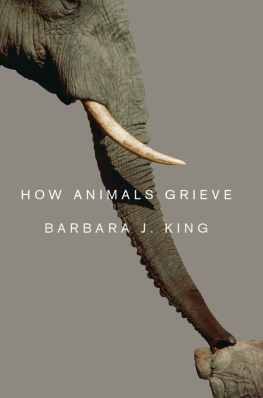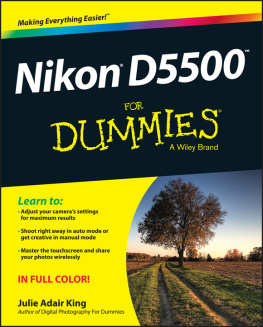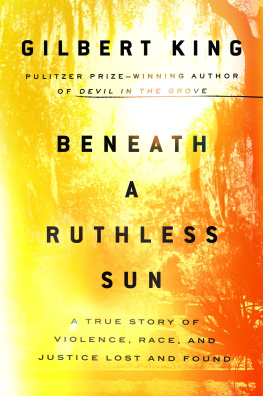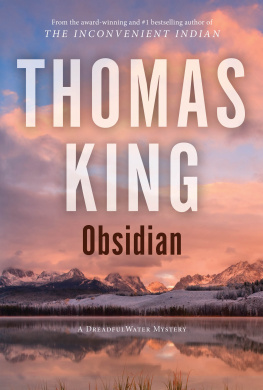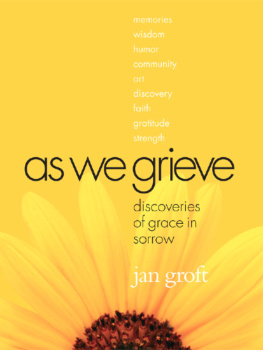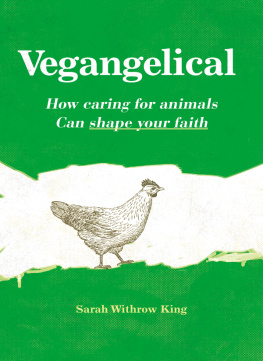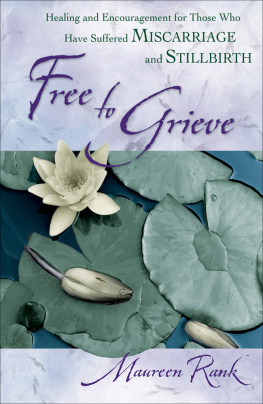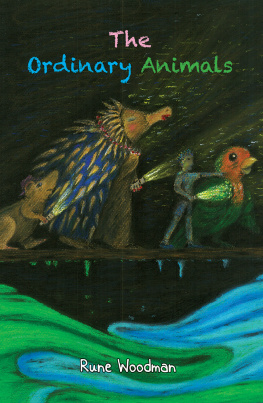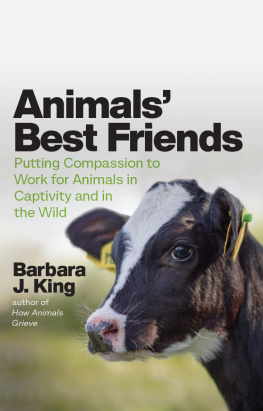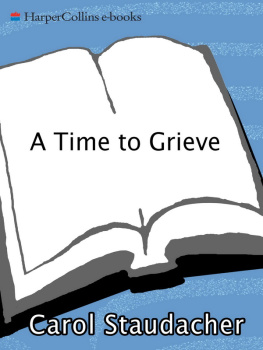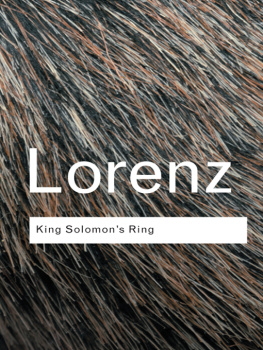King - How Animals Grieve
Here you can read online King - How Animals Grieve full text of the book (entire story) in english for free. Download pdf and epub, get meaning, cover and reviews about this ebook. City: Chicago u.a, year: 2014;2013, publisher: The University of Chicago Press, genre: Non-fiction. Description of the work, (preface) as well as reviews are available. Best literature library LitArk.com created for fans of good reading and offers a wide selection of genres:
Romance novel
Science fiction
Adventure
Detective
Science
History
Home and family
Prose
Art
Politics
Computer
Non-fiction
Religion
Business
Children
Humor
Choose a favorite category and find really read worthwhile books. Enjoy immersion in the world of imagination, feel the emotions of the characters or learn something new for yourself, make an fascinating discovery.
- Book:How Animals Grieve
- Author:
- Publisher:The University of Chicago Press
- Genre:
- Year:2014;2013
- City:Chicago u.a
- Rating:4 / 5
- Favourites:Add to favourites
- Your mark:
- 80
- 1
- 2
- 3
- 4
- 5
How Animals Grieve: summary, description and annotation
We offer to read an annotation, description, summary or preface (depends on what the author of the book "How Animals Grieve" wrote himself). If you haven't found the necessary information about the book — write in the comments, we will try to find it.
King: author's other books
Who wrote How Animals Grieve? Find out the surname, the name of the author of the book and a list of all author's works by series.
How Animals Grieve — read online for free the complete book (whole text) full work
Below is the text of the book, divided by pages. System saving the place of the last page read, allows you to conveniently read the book "How Animals Grieve" online for free, without having to search again every time where you left off. Put a bookmark, and you can go to the page where you finished reading at any time.
Font size:
Interval:
Bookmark:
How Animals Grieve
BARBARA J. KING
THE UNIVERSITY OF CHICAGO PRESS
CHICAGO AND LONDON
BARBARA J. KING is professor of anthropology at the College of William and Mary. She is the author or editor of many books, including Being with Animals. She writes regularly for National Public Radios 13.7: Cosmos & Culture blog and reviews for the Times Literary Supplement.
The University of Chicago Press, Chicago 60637
The University of Chicago Press, Ltd., London
2013 by Barbara J. King
All rights reserved. Published 2013.
Printed in the United States of America
22 21 20 19 18 17 16 15 14 13 1 2 3 4 5
ISBN-13: 978-0-226-43694-4 (cloth)
ISBN-13: 978-0-226-04372-2 (e-book)
Library of Congress Cataloging-in-Publication Data
King, Barbara J., 1956
How animals grieve / Barbara J. King.
pages ; cm
Includes index.
ISBN 978-0-226-43694-4 (cloth : alk. paper)
ISBN 978-0-226-04372-2 (e-book)
1. Grief in animals. 1. Title.
QL785.27.K56 2013
591.5dc2012045012
 This paper meets the requirements of ANSI/NISO Z39.48-1992 (Permanence of Paper).
This paper meets the requirements of ANSI/NISO Z39.48-1992 (Permanence of Paper).
FOR CHARLIE, SARAH, AND BETTY
AND FOR CATS MICKEY AND HORUS,
GRAY & WHITE AND MICHAEL,
RABBITS CARAMEL AND OREO,
AND EVERY OTHER ANIMAL WE HAVE
LOVED AND LOST
EVERYTHING IS EVERYTHING
BUT YOURE MISSING.
BRUCE SPRINGSTEEN
CONTENTS
PROLOGUE
ON GRIEF AND LOVE
One individual lies immobile, apart from the group. Everyone else rushes about, doing her work and keeping the high-functioning community running at top pitch. But the lone one lies deadand ignored.
After about two days, a smell begins to waft from the body, a strong chemical odor. Soon, another individual comes by and carries the corpse to a nearby graveyard, where it joins many othersan efficient process of disposal. No one mourns.
Is this a scene from a zombie thriller, that often revived standby of Hollywood, Burbank, and, recently, the publishing industry? What real-life culture could treat its dead in this cold, mechanical way? Humans everywhere engage in elaborate rituals: preparing the body, comforting the bereaved, ushering the newly dead into an afterlife (or at least the cold, hard ground).
No, this graveyard scenario comes not from humans but from ants. Biologist E. O. Wilson observed the pattern in the 1950s: an ant dies, it lies ignored for some days, and then another ant comes and carries the body to the ant equivalent of a cemetery. The release of oleic acid from the ants body, about two days after death, triggers the carrying response in other ants, Wilson told Robert Krulwich on National Public Radio in 2009.
Should a curious scientist borrow an ant, dab oleic acid onto its body, and return it to an ant trail, that antvery much alivewill also be carried off to a graveyard, struggling all the while. Death-related behavior in these insects is, as far as we can tell, driven purely by chemicals. While its possible that entomologists just dont know how to recognize displays of insect emotion, Im comfortable in hypothesizing that ants dont feel grief for their dead comrades.
Within the animal kingdom, ants are an extreme example. No one would expect a chimpanzee or an elephant to respond so mechanically to a whiff of chemicals. Chimpanzees and elephants are veritable poster species for animal cognition and emotion. Intelligent planners and problem-solvers, these big-brained mammals are emotionally attached to others in their communities. Finicky about with whom they spend their time, they may shriek or trumpet their joy when reuniting with preferred companions after a separation.
These animals do not just exhibit social bonds, as the stilted language of animal-behavior science often suggests. The emotions that chimpanzees and elephants feel for others are closely bound up with their complex cognitive responses to the world. Chimpanzees are cultural beings who learn their tool-use patternsfishing for termites, cracking hard nuts, or spearing bush babies in tree holes, depending on where they livein ways specific to their group. And just like the old clich, elephants never forget. They remember events vividly, to the point that they may suffer with post-traumatic stress disorder, as when their sleep is disrupted by nightmares after witnessing the killing of relatives or friends by ivory poachers.
Chimpanzees and elephants feel grief. Pioneering women field scientists Jane Goodall, observing chimpanzees in Tanzania, and Cynthia Moss, studying elephants in Kenya, reported years ago firsthand observations of the sorrow these animals felt at the death of loved ones. Its only natural, then, that chimpanzees and elephants appear in this book. The newest science adds fascinating new depth and details to Goodalls and Mosss original reports on grief in these species.
Animal grief is expressed and observed far beyond the African forests and savannahs, however. In this book, we will visit a variety of ecosystems to discover what is known about how wild birds, dolphins, whales, monkeys, buffalo, and bearseven turtlesmourn their losses. We will also peek into homes, and venture onto farms, in order to discover how our companion animalscats, dogs, rabbits, goats, and horsesexperience grief.
Historically, science has badly underestimated animal thinking and feeling. But now, scientists, often armed with videotaped evidence, are showing us that more animal species think and feel more deeply than wed ever suspected.
Take goats and chickens, two animals whose potential for thinking and feeling I had, for years, barely given a second thought. How many times had I seen goats clustered in farms or yards, near my home in Virginia or on my travels in Africa, and yet not really seen themand the same for chickens? Like most people, I create an implicit, mental hierarchy of animals when it comes to cognition and emotion. My working, if subconscious, assumption was that chimpanzees and elephants, on this scale, tower over animals like goats or chickens, who are just there in the backgroundor on our dinner plates.
Goat is the most widely consumed meat in the world and a dietary staple in Mexico, Greece, India, and Italy. It has also, over the last several years, been edging its way onto upscale plates in the United States. I have not eaten goat; Ive been a near-vegetarian for a while now. Only recently, after hanging out with some nearby goats, corresponding with friends who have raised goats, and reading Brad Kesslers memoir Goat Song, have I begun to see goats as the complicated creatures they are.
I met Bea and Abby, mother and daughter goats of unknown breed, one sunny afternoon last year. They reside at the 4BarW Ranch, the home of Lynda and Rich Ulrich, near my home in Gloucester County, Virginia. When I met Lynda and Rich, I felt instantly that I was in the presence of like-minded souls. Rescued goats, horses, dogs, and a cat roam the ranch, and my hosts were full of the good stories that animal-rescue people love to exchange.
Bea is a pretty off-white shade, with a wispy beard and a calm manner; her daughter, Abby, is the same color but beardless. Lynda and Rich acquired Bea first, and only six weeks or so later did Abby join the other goats at the ranch, where they roam together through a large enclosure. When Bea and Abby reunited, they expressed what can only be called goat joy. They coo-vocalized, rubbed their faces together, and cuddled together in an explosion of mutual affection that brought tears to Lyndas eyes.
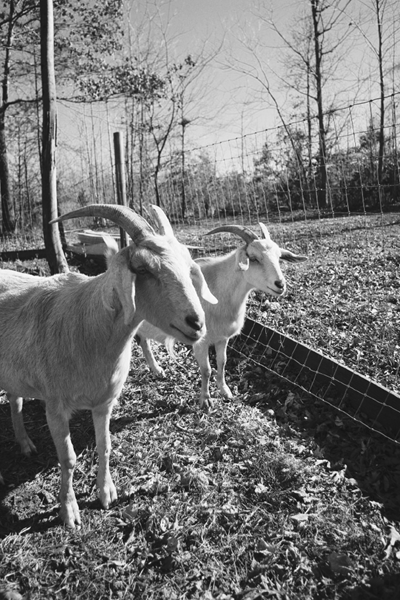
Font size:
Interval:
Bookmark:
Similar books «How Animals Grieve»
Look at similar books to How Animals Grieve. We have selected literature similar in name and meaning in the hope of providing readers with more options to find new, interesting, not yet read works.
Discussion, reviews of the book How Animals Grieve and just readers' own opinions. Leave your comments, write what you think about the work, its meaning or the main characters. Specify what exactly you liked and what you didn't like, and why you think so.

